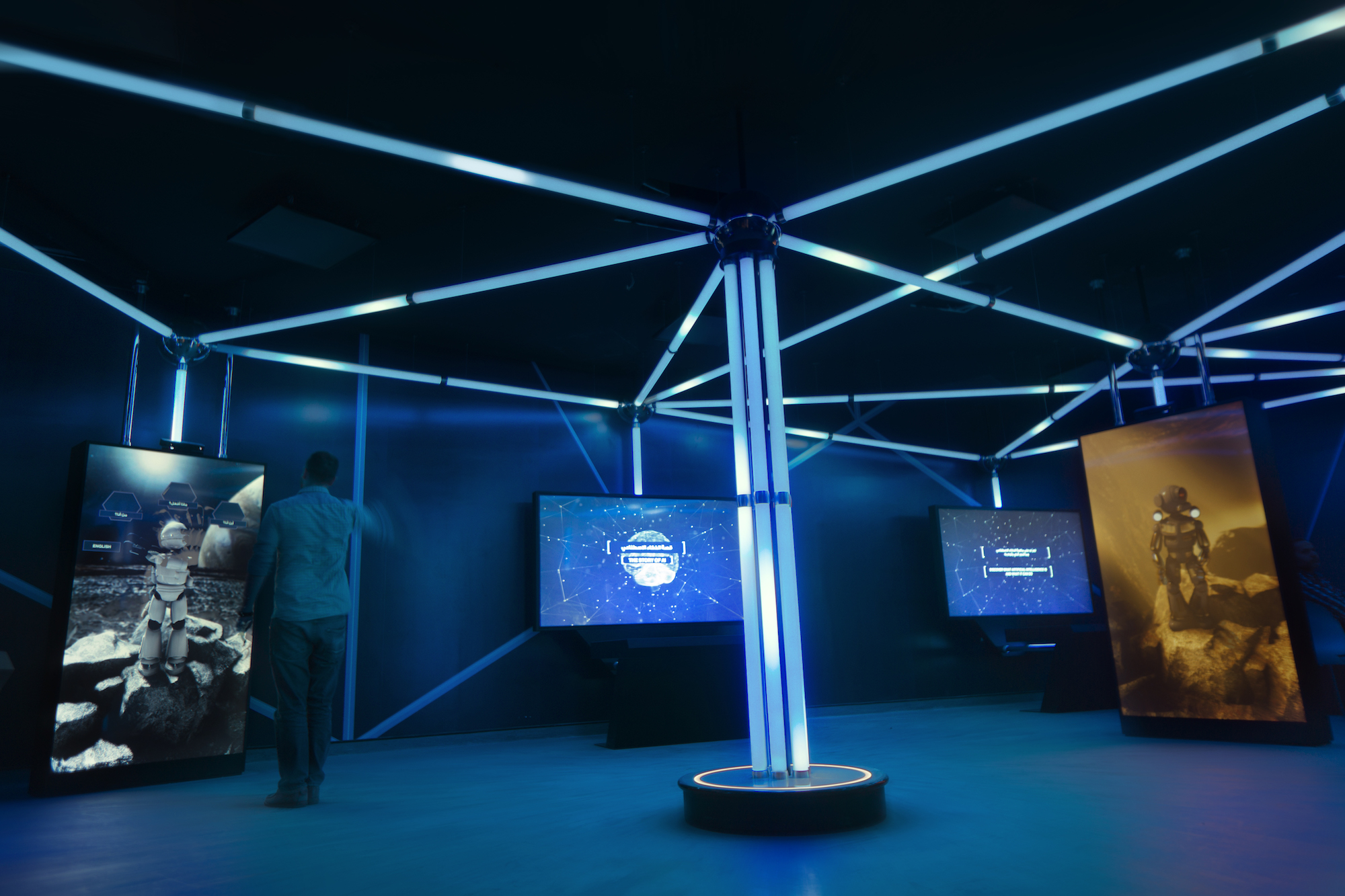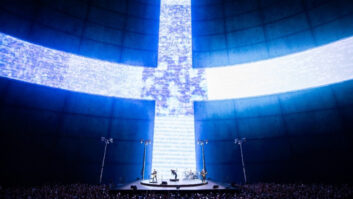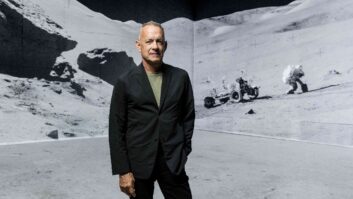
The world’s economies have grown largely on the back of us buying ‘things’ – new cars, new washing machines, new TVs, new phones… However: learned researchers are sensing what could be a fundamental shift, with the rise of the millennial generation – defined, broadly, as those aged 20 to 35 – and its preference, not for ‘things’, but for ‘experiences’.
In the USA, for example, millennials are on the point of becoming the largest living adult generation – larger even than baby boomers, according to the U.S. Census Bureau. That phenomenon appears to be replicated worldwide. As such, they’re a force to be reckoned with: there is much talk of an emerging ‘experience economy’.
Already, in the AV world, their working preferences are said to have driven the rise of the huddle room. And they may, directly or indirectly, have propelled the rise in projection mapping – done well, a classic example of an ‘experience’. Are the effects of the growing millennial generation yet being felt, however, by the visitor attractions and museums market – a key industry for AV manufacturers and integrators alike – and how are they responding?
It turns out: it’s not just about millennials.
Better tools and technologies
“I think it has always been the dream of designers to make their experiences more personal for guests,” believes Scott Harkless, chief innovation officer at themed entertainment show control company Alcorn McBride. “What’s changed is that there are much better tools and technologies available that make this dream more achievable.”
“Methods of immersing guests into storylines and narratives have become a staple of the attractions and visitor experience industries,” adds Peter Cliff, creative director, Holovis, an experiential design company. “Even rollercoasters, which have traditionally just focused on the end thrill, are now being driven by story, as guests move through immersive queuing areas that are alive with emerging and immersive AV solutions.”
Another widely reported attribute of the millennial generation is its comfort with, and dependency on, technology. It’s taken for granted that technology exists to enhance life – whether that’s business life or personal life. For the most part, that technology is acutely personal – whether it’s Instagram or a Spotify playlist.
Again, though, it’s not just millennials. A whole generation has grown up not knowing life before mobile phones – and for them, too, it’s personal. Ross Magri, managing director of theme park and visitor attractions visual engineering company Sarner International, sees a challenge emerging which needs to balance what has often been a mass market experience, with an emphasis on visitor numbers, and the need on the other hand to deliver experiences that are memorable because they are focused on the individual.
A more sophisticated experience
“As the more technologically aware younger audience reach adulthood, they are demanding a more sophisticated experience that makes better use of technology,” says Magri. “For the design team, the challenge so far has been throughput, or rather the fact that the more personal the experience, the fewer the number of visitors that can be catered for at any one time. Unfortunately, there is no easy answer and although technology has helped to make this possible, there are still major hurdles to resolve.”
The industry seems to agree that these are hurdles that need to be surmounted if the visitor attractions industry is to remain relevant.
Harkless alludes to Dale Carnegie’s renowned observation about how magical the sound of our own name is to us. “When people – or attractions – take notice of who we are, we become naturally more engaged,” he considers. “With that in mind, I can’t imagine a better way to make an experience more immersive than to include elements that are personalised for the audience.” Magri agrees, noting how information can be targeted based, for example, on a visitor’s age and interests. He mentions designing media to be more immersive – a point that Cliff picks up on.
Real-time media
“We use real-time media to put guests in control of their journey,” he explains, “unlocking multi-variant and personalised narrative experiences depending on the decisions they make or paths they choose to take. This enhances the engagement as people share with their friends what they have discovered, whether in an entertainment or educational environment, allowing guests to work together to unlock more of an adventure’s secrets.
“This can also continue away from the physical location, with games or challenges that guests can complete at home to continue their journey,” he adds. “Then, when they return to the original location, the experience will have changed to reflect their progress. This is a great way of encouraging repeat footfall.”
Visitors are seeking – expecting – personal experiences, then, and it seems the visitor attractions industry is already responding. Cliff mentioned real-time media – but what are the other technologies that enable that response?
Cliff again, who notes the concept of an ‘extended’ experience and the role of augmented reality activated through apps on a guest’s phone. “We’ve evolved this to now use invisible tracking and recognition technologies that facilitate the experience without the guest having to use a device,” he says. “This includes CAD tracking, machine learning, facial recognition, AI, WiFi triangulation and geofencing.”
“Touchscreens, VR and RFID are just some examples where technology is helping to personalise the visitor experience,” states Magri. “Other technologies, such as the Microsoft HoloLens, have potential but are not yet ready for the mass market. Looking beyond current technologies, linking visitors to data sets will help further personalise the visitor experience.”
Embracing Big Data
“The likes of Google and Facebook, for better or worse, have fully embraced Big Data,” he goes on. “Whether visitor centres and museums will use data sets to further personalise the visitor experience is yet to be seen, but this would open great opportunities where content could be further tailored to the visitors’ specific interest, knowledge and background.”
It’s a similar conundrum to the one faced, if to a lesser degree, by the digital signage industry. The technology to adapt advertising in digital signage, based on age, sex and facial expression, is certainly already widely used – and is not universally liked, with consumers complaining about being ‘watched’. Would they react better to their Instagram or Twitter feed being mined by a visitor attraction in order to provide a ‘better’ experience?
Harkless develops the technology theme.
“There are three key areas of technology that are improving personalisation,” he believes. “First, there are the personal devices used to identify the guest. This includes technologies like smartphones, smart watches, and RFID bands/cards. Second, there’s the infrastructure that stores and accesses information about the guest once they have been identified by their personal device. This typically involves a database that is associated with an account that has information about the guest that can be used to personalise their experience.”
“Lastly,” he concludes, “there’s the attraction system itself which utilises the guest’s information to apply personalisation to the experience. As for what that personalisation actually is – it could be anything, such as alternative content, images, sounds, lighting, and other environmental elements. It could also include gaming information like scores, ranking, or completed objectives.”
“The sky’s the limit,” he laughs.
More complex
In the good old days of a ‘one-size-fits-all’ visitor attraction such as a museum, a few projectors and screens would often do the trick – augmented, by the more forward-thinking establishments, with touchscreens. It seems likely, however, that personalising an experience will make life more complex for those charged with installing them today.
“As far as audiovisual experience is concerned, personalisation often involves more dynamic content,” says Harkless. “This means our systems need to have more advanced show control that’s able to drive this dynamic content on-demand based on the guest’s personal information. The audiovisual sources also need the ability to access content dynamically and transition cleanly between content.”
For Magri, IP is the key enabling technology. “As most AV networks are now IP-based,” he points out, “this allows us to use a standard and well established protocol to deliver the desired personalisation. It also allows for future technologies to further expand on the ability to deliver a more immersive and personalised experience.”
On the other side of the coin, tried-and-trusted in-house technologies also have a place.
“We use our proprietary visualisation suite RideView to bring all our designs to life in 1:1 scale and in real-time as we are designing,” explains Holovis’s Cliff. “This takes place in a CAVE on our UK demonstration campus; a five-sided structure where all the walls feature 3D volumetric projection and users are immersed into the expansive data sets by wearing head-tracked 3D glasses. This allows multi-discipline teams to explore the space together, experiencing exactly how the final setting will look long before they would normally be able to in the process.”
Just as the consumer world has increasingly eschewed mass market, off-the-peg in favour of custom and bespoke, so too the world of visitor attractions, museums and so on. But: the mass consumer market hasn’t gone away – and nor does it look likely to any time soon. What about theme parks, visitor centres and the like?
Not mutually exclusive
“Shared experiences and personal experiences aren’t necessarily mutually exclusive,” explains Harkless. “I strongly believe that the best experiences are the ones we share with people we care about. I’m all for offering personal touches for guests – but this should always be done in a way that they can enjoy with their companions.” He has an ally in Sarner’s Magri: “It’s important to bear in mind, where personalisation is considered, that this does not isolate the visitor,” comments Magri. “Part of the experience of visiting public spaces is to do so within a social environment, and whilst personalisation has benefits, it is also important to balance this against creating a social environment that is conducive for people to meet and share their experience.”
Cliff doesn’t disagree. “Our goal is to combine the two, facilitating personal experiences but in a shared space, so guests can share their discoveries with their friends to further enhance the experience for everyone. In the case of a museum for example, the decisions made by each guest can unlock a new piece of information, tailored to their interests. Then they can then share this discovery with their friends and see what different information they have unlocked to bring the space and artefacts to life in more dynamic ways.”
It becomes clear that a progressive shift is taking place, enabled by a range of technologies, to deliver out-of-home experiences that are more immersive and more engaging – because they are designed to appeal to each individual visitor. The thrill and excitement of a collective experience won’t be left behind, however. As ever, in almost all things, a balanced approach is the way forward. The AV industry is helping deliver experiences that everyone – not just millennials – can enjoy.







